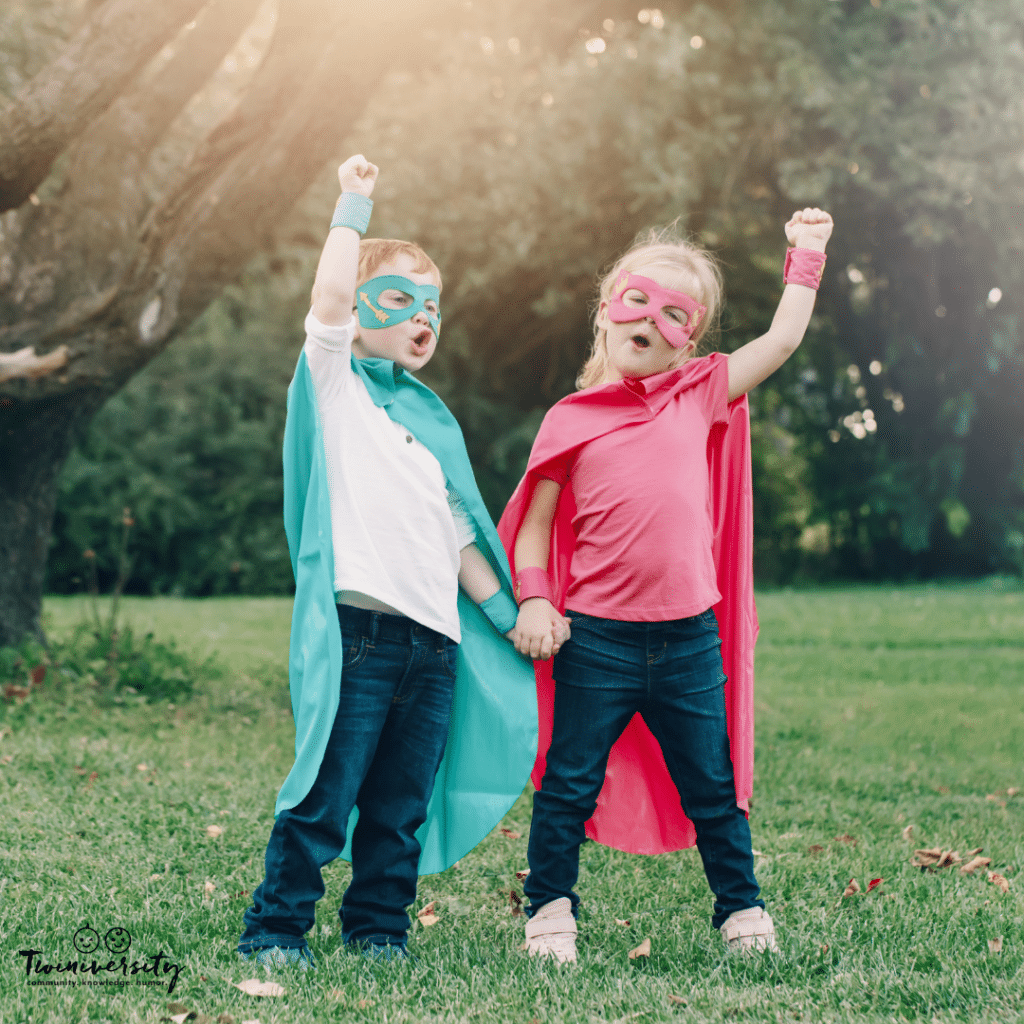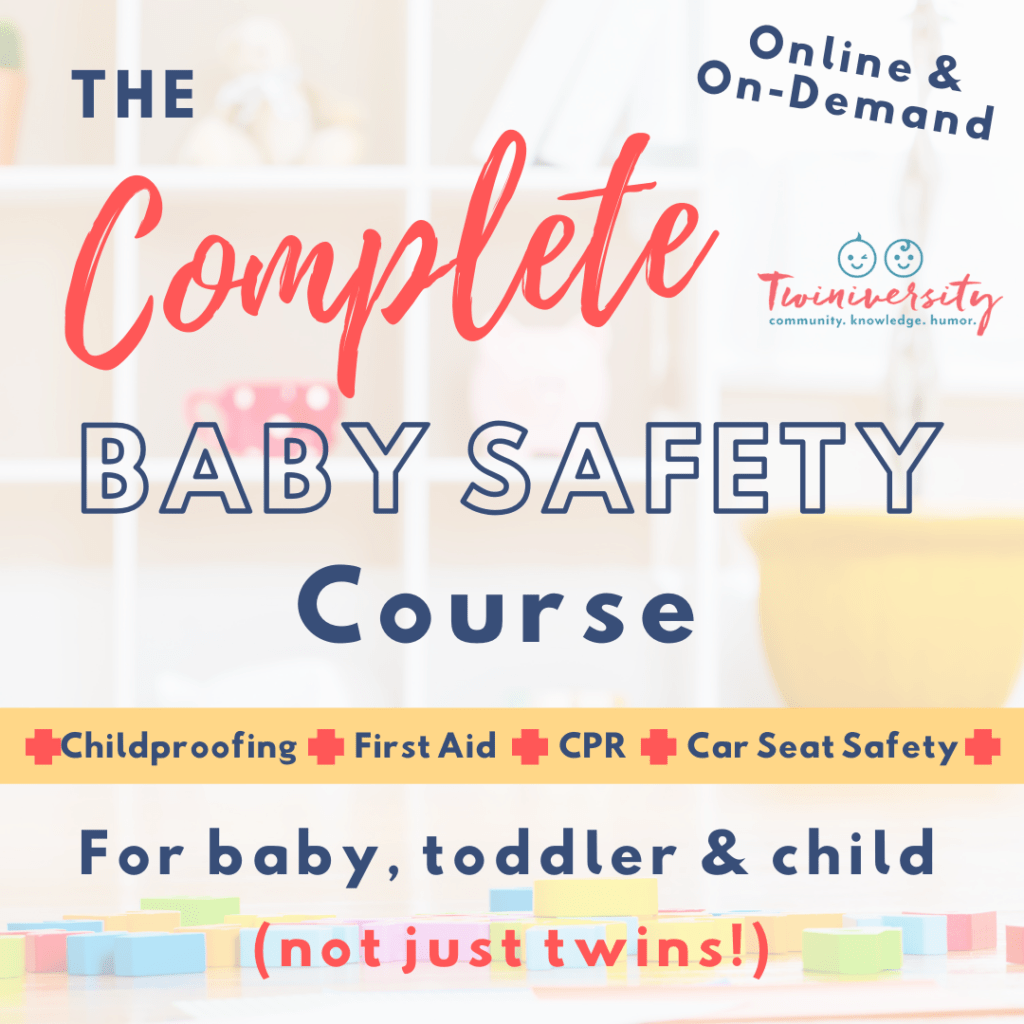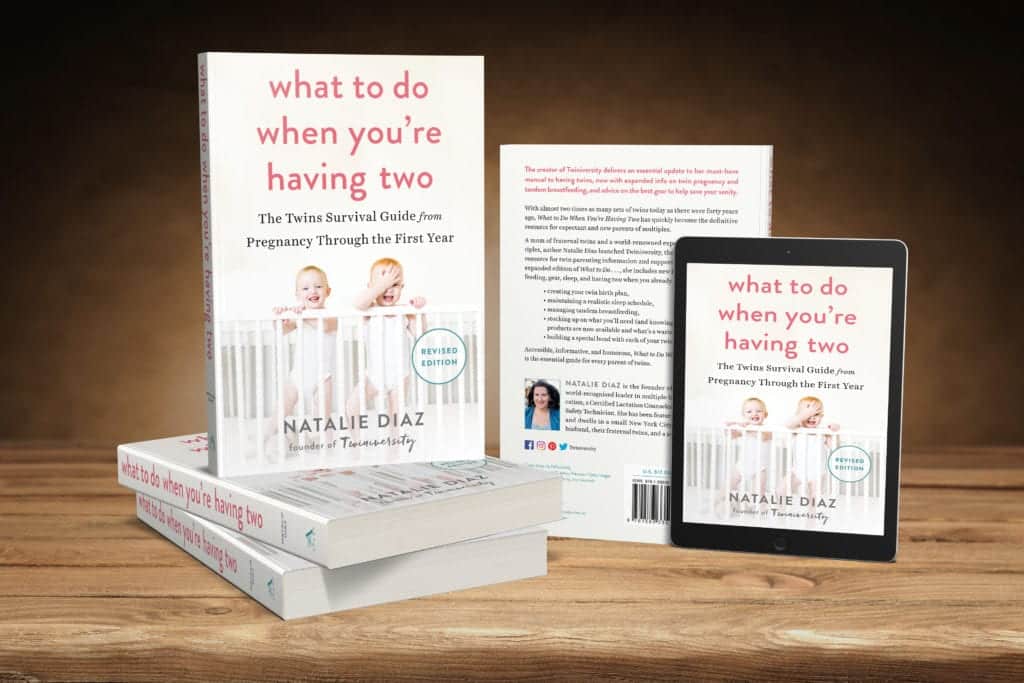Studies show that 1 in 5 girls and 1 in 20 boys suffer some type of sexual abuse before age 18 and that it occurs in all communities regardless of race, class, ethnicity, or gender. As such, it is vital to teach your kids the difference between good and bad touch and how to prevent bad touch. Read on to find out more about bad touch and how to empower your children against it.
What is bad touch?
Bad touch is any time a person is touched in a way that makes them uncomfortable, afraid, or nervous. Most commonly, bad touch areas include genitals, breasts, and bottom areas, or anywhere that a bathing suit covers. However, children should know that any touch that makes them uncomfortable is not ok.
You can explain bad touch in contrast to good touch, or the way people show they care for each other. Be clear about good touch (hugging, holding hands, changing diapers) and who is allowed to touch children in these ways.
Need some baby safety training? Take the Twiniversity Complete Baby Safety course, offered on-demand. Includes video modules on infant, toddler, and child CPR, first aid, and common medical ailments, plus car seat installation and safety and childproofing your home. Click here to learn more!
How can I help my child understand bad touch?
At the age of 2, start pointing out the private parts of their bodies using the proper anatomical names. Explain that no one may touch them there unless they are changing their diaper or giving them a bath. Around age 3 you can explain further and include any touch to their body that makes them feel uncomfortable.
Teach your children the proper names for these areas. This gives them the correct tools to express themselves. If your daughter tells her teacher that someone touched her “poodle” (vagina), they may not understand what she is trying to say and cannot help. This may discourage the child from speaking up again
When discussing bad touch, be sure to explain yourself clearly and provide context. The world is full of exceptions to the rules they learn and, without context, many concepts are confusing. Children need to have a clear understanding of bad touch in order to prevent or stop it. A general “no one can touch you there” doesn’t quite work. For young children, be sure to explain the context of appropriate touch:
- Make it clear that only caretakers are to touch their private area and only during a diaper change or bath.
- Explain that a doctor is the only non-caretaker allowed to touch their private area and only under the supervision of their caretaker during an exam
- Role play different situations and make sure to remind them of the rules at every doctor’s appointment.
- Explain that even if someone says that they are a doctor that it is not ok for them to touch or look at their privates outside of a doctor’s office and without a parent supervising.

How can I empower my child against bad touch?
Children are often told to listen and do what we tell them, and if they don’t, they will be punished. Because of this many children feel like they are going to get in trouble if they say no. Teach your children that their body is theirs and theirs alone and that they have the power to tell someone to not touch them in any context. Situations where adults often innocently ignore children when they say no include:
- Forced Affection – Parents often tell their children to hug family members and friends, regardless of how the child feels. Never make your child hug or kiss anyone if they do not wish to. Children need to know it is ok to say no to a hug if they don’t feel comfortable.
- Tickling – Adults often think that tickling is a fun way to engage and connect with children. As long as the child is having fun and the adult stops when the child is ready to stop, this is fine. You must support your child and make sure that the adult stops when they say.
It can be hard to stick up for your child in these situations but that is crucial to preventing bad touch. These situations send a wrong and confusing message to children, especially with a loved one who is supposed to respect them. It makes them believe that their power to say no comes with restrictions.
Check out all our Twiniversity merch in our SHOP! We’ve got twin mom and dad t-shirts, twin planning printables, lactation support, twin baby shower planners & games, a digital twin pregnancy journal, and so much more! Start shopping now
What can I do to prevent bad touch situations?
Make sure to listen to your children when they tell you or someone else no. Part of preventing bad touch includes stopping when your child asks you to do so. If your child can’t practice this skill with you it will be harder for them to do so in dangerous situations.
Be present and aware of their interactions with other adults. Ask them occasionally if anyone has ever touched them in a way that has made them feel uncomfortable. Survivors of child sexual abuse often say that may have been brave enough to tell if only someone had asked. Keep the lines of communication open and always remain non-judgemental so your child feels safe discussing hard things with you.

Empower and advocate for your children to prevent bad touch
Make sure that you back your children up when they say no. You are their enforcer; their champion. If they want Uncle to stop tickling them, or grandma to stop hugging them, but those adults are not listening, you need to step in and make sure that your child’s wishes are heard and understood. This can create some friction with those who simply do not agree with you, but you need to stand your ground. Abusers often tell children that it is their fault, that mom and dad will be upset with them, or simply that they are an adult and the child needs to comply or they will get in trouble. When you arm your children with the tools they need to stand up for themselves and the confidence that you are in their corner, they have the ability to prevent bad touch situations before they ever occur.
Latest Posts from Twiniversity
- Best Crib Mattress
- Three Bras You Need After Delivering a Baby
- Everything You Need to Know About Your Mucus Plug
- Sunscreen Hacks for Your Twinnies
- Are Twins Hereditary?
Related Articles
10 Tips For Internet Safety With Your Kids
10 Tips To Protect Your Kids From Strangers
10 Things Children Should Memorize In Case Of An Emergency
Are You a New Twin Parent?
Check out Natalie Diaz’s book:
“What To Do When You’re Having Two
The Twin Survival Guide From Pregnancy Through the First Year”
In What to Do When You’re Having Two: The Twins Survival Guide from Pregnancy Through the First Year, national twins guru and founder of Twiniversity (and twin mom herself!) Natalie Diaz provides a no-holds-barred resource about life with twins, from pregnancy and birth all the way through your duo’s first year of life.
Accessible and informative, What to Do When You’re Having Two
is the must-have manual for all parents of twins.
Need some twin parent friends? Get the support you need with a Twiniversity Membership. Benefits include a monthly twin parent club meeting on Zoom, access to a private Facebook group just for twin parents, and a video library of twin parenting lessons. Visit Twiniversity.com/membership to join today!











